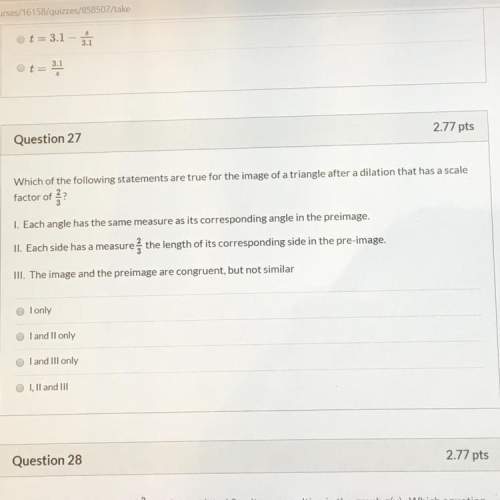
Mathematics, 20.06.2020 06:57 amoauya
A triangle has vertices at B(−3, 0), C(2, −1), D(−1, 2). Which transformation would produce an image with vertices B″(1, −2), C″(0, 3), D″(3, 0)?
(x, y) → (x + 1, y + 1), (x, y) → (y, x)
(x, y) → (x + 1, y + 1), (x, y) → (−x, y),
(x, y) → (x, −y), (x, y) → (x + 2, y + 2)
(x, y) → (−x, y), (x, y) → (x + 2, y + 2)

Answers: 1
Another question on Mathematics

Mathematics, 21.06.2019 16:00
Solve for x -2.3(r - 1.2 ) = -9.66 enter you answer as decimal.
Answers: 1


Mathematics, 21.06.2019 19:30
What is the effect on the graph of the function f(x)=x when f(x) is replaced with -f(x)+4
Answers: 1

Mathematics, 21.06.2019 21:00
Solve this problem! extra ! 3025/5.5 = a/90.75 / = fraction
Answers: 3
You know the right answer?
A triangle has vertices at B(−3, 0), C(2, −1), D(−1, 2). Which transformation would produce an image...
Questions

Mathematics, 28.05.2020 02:03

Computers and Technology, 28.05.2020 02:03

Mathematics, 28.05.2020 02:03



Social Studies, 28.05.2020 02:04



Mathematics, 28.05.2020 02:04

Mathematics, 28.05.2020 02:04

English, 28.05.2020 02:04

Mathematics, 28.05.2020 02:04

Computers and Technology, 28.05.2020 02:04


Mathematics, 28.05.2020 02:04



Mathematics, 28.05.2020 02:04

Mathematics, 28.05.2020 02:04

Arts, 28.05.2020 02:04




